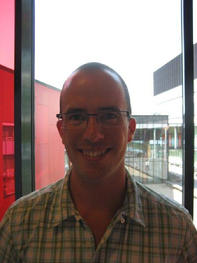Controlling the loading of protein nanocages
Promotion date: September 20.
Promotor: Prof.dr. Jeroen Cornelissen
Assistant promotor: Dr. Melissa Koay
| The work described in this thesis focuses on the use of natural protein building blocks to assemble nanocages. Most common strategies for the loading of different protein nanocages suffer from a lack of numerical control over cargo loading. The aim of this thesis was to create a controllable methodology to selectively load protein nanocages with the cargo of interest. It focuses on two fundamental approaches to optimize the loading: modifying the cargo by genetically engineering and exploring different protein cages. The capsid of the Cowpea Chlorotic Mottle Virus (CCMV) was used as a well-established platform for the design of new cargo loading techniques. Loading could be controlled up to ~20 fluorescent proteins per capsid, however, such high cargo loading ratios also led to erroneously formed capsids. A new type of protein nanocage was also explored: the bacterial encapsulins. Overall, the encapsulation of non–natural cargo in encapsulins is highly effective, yet still a very novel approach in which many things remain to be investigated. From this thesis, it is apparent that the best control over protein nanocage loading is achieved in vitro, by purifying the cargo and shell proteins and carefully calculating the mixing ratios. |
Was your research fundamental in nature?
A vast part of my work was experimental. The numerical control of loading genetically modified material in nanocages was quite successful, especially in the Cowpea Chlorotic Mottle Virus based nanocages. The experiments of loading bacteria-originated encapsulines, which are more stable and stronger, took quite some time. A disadvantage during my PhD research was the moving of laboratories to the new facilities in the university building Carre. However, after two years we had some success with the encapsulins and gained a better understanding of the loading mechanism.
Two papers are now underway to be published, as are two book chapters. This area of research is quite new still and we operated at the front row here, which was very exciting.
In what way did you develop as a researcher and scientist during your PhD period?
I’m working much more independently now in comparison with my master’s work, for example. Also I learned to change strategy more easily, once it is proven that one way of obtaining results is not working as expected beforehand. Being a go-getter, for me this is not always easy to do: I do not readily except failure.
What are your future plans?
I’m not sure about this yet. Being an academic can be hard from time to time, especially when uncertainty in financing of projects is involved. On the other hand, performing breakthrough fundamental research projects is possible only in an academic setting. Perhaps working for a knowledge institute will provide the right mix for me in future. Anyway, I would like to stay in the Netherlands in my future job.
What, in your opinion, is important for Mesa+ to stay successful in future?
The availability of equipment could be organized more transparent and less bureaucratically: a single database with equipment and free use of those in between all MESA+ sub-groups. All these machines should have an operating technician, that knows the machine inside-out, who can help you doing new and often complex measurements. The technicians already are very helpful, as are the next-door colleagues responsible for different machines. As a matter of fact, I learned a great deal from them.

